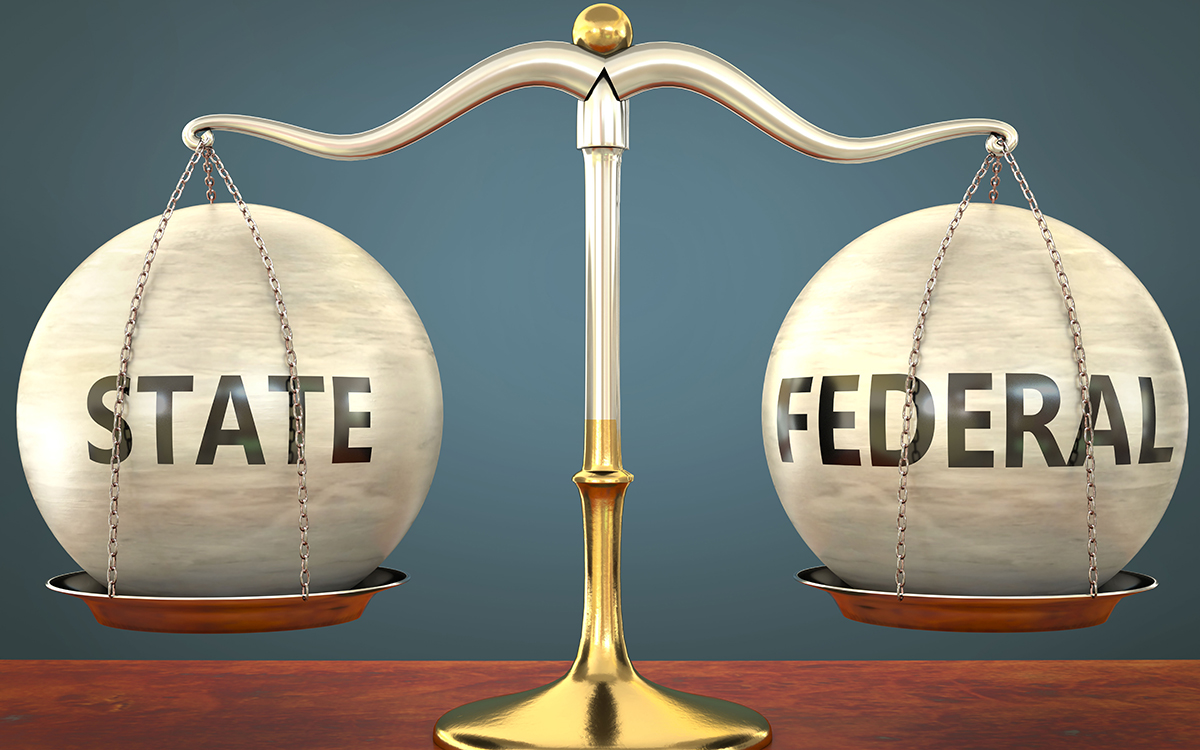Bankruptcy Exemptions in Ohio
Facing financial hardship can be overwhelming, especially when the fear of losing your home, car, or cherished possessions adds to the stress.
Bankruptcy exemptions are designed to protect key assets, offering a safety net during these challenging times.
These exemptions ensure that, even amidst financial turmoil, you can retain the fundamental elements of your life, residence, vehicle, and personal belongings, allowing you to focus on rebuilding and moving forward.
What Are Bankruptcy Exemptions?
Bankruptcy exemptions are legal provisions that allow individuals filing for bankruptcy to retain certain essential assets, such as a primary residence, vehicle, personal belongings, and tools necessary for employment. These exemptions ensure that debtors can maintain a basic standard of living and have the means to rebuild financially after bankruptcy.
Difference Between Federal and State Exemptions
In the United States, both federal and state laws provide bankruptcy exemptions. Federal exemptions are standardized across the country, while state exemptions vary by state. Some states allow debtors to choose between federal and state exemptions, selecting the set that better protects their assets. However, other states require the use of state-specific exemptions and do not permit the use of federal exemptions.
Ohio is among the states that have “opted out” of the federal exemption system. This means that individuals filing for bankruptcy in Ohio are required to use the state’s specific exemptions and cannot choose the federal exemptions.
These state-specific exemptions are designed to reflect the cost of living and economic conditions particular to Ohio.

Ohio Bankruptcy Exemptions
When facing financial challenges, bankruptcy offers a lifeline by allowing individuals to discharge debts and start fresh. However, it’s necessary to understand that not all assets are at risk of being liquidated.
1. Homestead Exemption
The homestead exemption in Ohio allows individuals filing for bankruptcy to protect their primary residence from being sold to pay off creditors, as per Ohio Rev. Code Ann. § 2329.66(A)(1)(b).
This exemption helps ensure that you can retain a place to live after bankruptcy, offering a fresh financial start.
Protection Limits
Under Ohio law, the homestead exemption currently protects up to $161,375 of equity in your primary residence. This means that if the value of your home exceeds this amount, the portion that surpasses this limit may be subject to liquidation to pay creditors.
Eligibility and Tenancy by the Entirety for Married Couples
Ohio’s homestead exemption rules also have specific provisions for married couples. If a property is owned by both spouses as tenants in the entirety (a form of joint ownership), it may be fully protected in the case of bankruptcy, even if only one spouse files. However, this protection is subject to various conditions, and it’s important to consult with a local bankruptcy attorney to confirm eligibility.
2. Motor Vehicle Exemption
Ohio law allows individuals filing for bankruptcy to exempt up to $4,450 in equity in a motor vehicle, as per Ohio Rev. Code Ann. § 2329.66(A)(2). This means that if the value of your car is less than or equal to this amount, it will be fully protected from creditors during the bankruptcy process.
Special Considerations for Leased vs. Owned Vehicles
- Owned Vehicles: The motor vehicle exemption applies to the equity you hold in a vehicle you own outright. If the car is worth less than $4,450, you can retain it during bankruptcy.
- Leased Vehicles: For leased cars, the situation is different. The exemption doesn't protect the car itself but only covers the remaining lease obligations. If you’re behind on lease payments or looking to terminate the lease, the vehicle may be returned to the lessor, and you may still need to resolve any outstanding lease balances.

3. Ohio Wildcard Exemption
The wildcard exemption in Ohio offers a versatile way for individuals filing for bankruptcy to protect personal property that may not fall under other specific exemptions, as per Ohio Rev. Code Ann. § 2329.66(A)(18).
With a limit of $1,475, this exemption allows you to safeguard a wide range of personal belongings, giving you flexibility to choose what assets to protect.
Since it doesn’t apply to real estate, it can be particularly valuable for protecting items like electronics, furniture, or other valuables that may exceed other exemption limits.
4. Personal Property Exemptions
Ohio law also provides protection for various personal belongings, ensuring that you can retain the essentials needed for daily living, as per Ohio Rev. Code Ann.2329. Some of the key personal property exemptions include:
- Household Goods, Clothing, and Furnishings: Up to $700 per item, protecting items like furniture, appliances, and clothing.
- Jewelry: You can exempt up to $1,875 in jewelry, allowing you to retain personal or sentimental valuables.
- Burial Plots and Health Aids: These exemptions ensure that you can maintain your health and plan for end-of-life needs without losing key assets.
- Disability Benefits and Personal Injury Awards: Disability benefits, future earnings compensation, and personal injury awards are protected, ensuring that your financial support remains intact during bankruptcy.
These exemptions are designed to help you preserve your basic needs, health, and personal well-being, allowing for a more manageable recovery post-bankruptcy.
5. Retirement Accounts Protection
Under federal non-bankruptcy exemptions, you can safeguard tax-exempt retirement accounts, including 401(k)s, 403(b)s, profit-sharing and money purchase plans, SIMPLE IRAs, SEP plans, and defined benefit plans.
Pensions and annuities for public employees, police officers, and firefighters are entirely protected under federal law, as are benefits for dependents of volunteer firefighters.
Death benefits for public safety officers, along with ERISA-qualified plans, Roth IRAs, traditional IRAs, and Keoghs essential for support, are also fully protected.
For Ohio residents, the Ohio Revised Code § 2329.66(A)(10)(a) provides specific exemptions for pensions and retirement plans, ensuring certain retirement benefits remain protected from creditors in bankruptcy cases within the state.

Other Ohio Exemptions
Ohio provides various exemptions to safeguard personal property, retirement benefits, and other assets in bankruptcy:
Personal Property Exemptions:
- Jewelry: Up to $1,875 in value (§ 2329.66(A)(4)(b)).
- Household goods: $14,875 total, with a maximum of $700 per item (§ 2329.66(A)(4)(a)).
- Cash on hand or deposit: Up to $550 (§ 2329.66(A)(3)).
- Tools of the trade: $2,825 in books, tools, and equipment used in business or occupation.
- Burial lot: Interest in one burial lot (§ 2329.66(A)(8)).
- Personal injury award: $27,950 received within 12 months before filing (§ 2329.66(A)(12)(c)).
- Wages: 75% of earned but unpaid wages (§ 2329.66(A)(13)(b)).
- Support payments: Spousal or child support, as necessary for support (§ 2329.66(A)(10)(b)).
Retirement and Pension Benefits:
- State teacher retirement system pensions (§ 3307.41).
- Private pensions (§ 2329.66(A)(10)(b)).
Miscellaneous Exemptions:
- Crime victim’s compensation: Amounts received within 12 months of filing (§ 2329.66(A)(12)(a); § 2743.66(D)).
- Workers' compensation benefits: Fully exempt (§ 2329.66(A)(9)(b)).
- 529 savings plans: Exempt under § 2329.66(A)(10)(e).
- Disability assistance payments: Protected under § 2329.66(A)(9)(f); § 5115.07.
- Tax credits: Earned income tax credit (EITC) and child tax credit (§ 2329.66(A)(9)(g)).
- Unemployment compensation benefits: Exempt under § 2329.66(A)(9)(c).
- Death benefits: Limited exemption for benevolent society death benefits (§ 2329.66(A)(6)(a)).
- Vocational rehabilitation benefits: Covered under § 2329.66(A)(9)(a); § 3304.19.
These exemptions collectively ensure that individuals filing for bankruptcy in Ohio retain critical assets and income to maintain stability.
Get the help you need. Call Richard West’s bankruptcy attorneys at 1-937-748-1749 today.
FAQs
Bankruptcy exemptions in Ohio are specific laws that allow you to protect certain assets, such as your home, car, or personal property, during bankruptcy proceedings.
Yes, Ohio’s homestead exemption protects up to $161,375 of equity in your primary residence.
Ohio law exempts up to $4,450 in equity for one motor vehicle.
Spousal or child support that is reasonably necessary for support is exempt under Ohio law.
Yes, Ohio exempts unemployment benefits, disability assistance, and workers’ compensation benefits from creditors.
Consult with a bankruptcy attorney in Ohio to ensure you maximize your exemptions and protect your assets.
Sources:
[1] Court Statistics | Northern District of Ohio | United States Bankruptcy Court. (n.d.-b). https://www.ohnb.uscourts.gov/court-info/court-stats
[2] Bankruptcy Filings Statistics. (n.d.). United States Courts. https://www.uscourts.gov/data-news/reports/statistical-reports/bankruptcy-filings-statistics/




